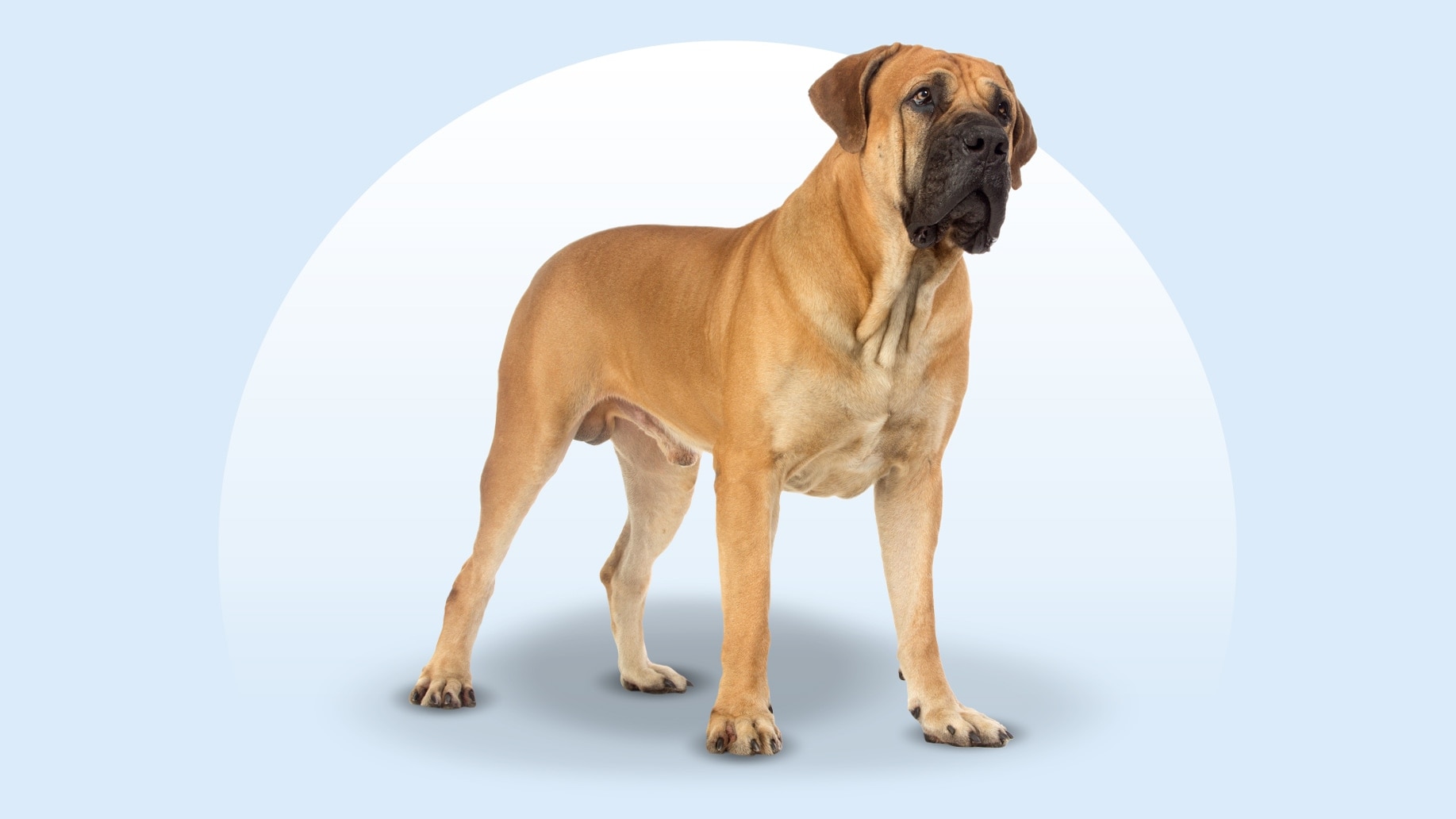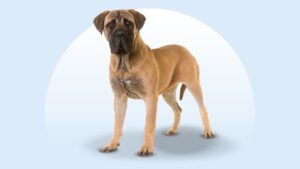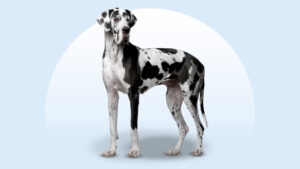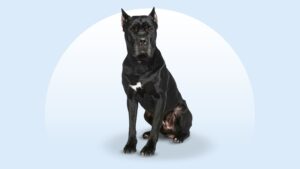Boerboel
Updated December 15, 2025
Boerboel
Updated December 15, 2025
The Boerboel is a loyal pup who used to guard diamond mines in South Africa, but now the only jewel they’re attached to is you. If you’re looking for an ultra-loyal and highly intelligent dog, look no further than the Boerboel. But don’t be fooled—they can be super affectionate, too!
Doting, Confident, Loyal
150–200 pounds
22–27 inches
9–11 years
Brown, Red, Cream, Brindle, Tawny, Reddish Brown
Looking for a four-legged partner who’s big, loyal, and ready to join your exercise routine? Meet the Boerboel, a 150-pound bestie who never misses a day of training. The only thing they love more than a good workout is you.
But while South African Boerboels are often reserved around new people, these giant dogs turn into teddy bears at home.
Boerboel Characteristics
Boerboel Appearance
Large and muscular, the Boerboel dog breed has droopy jowls and a black mask of fur. Their short, dense coat comes in a range of colors, and they move with confidence and purpose.
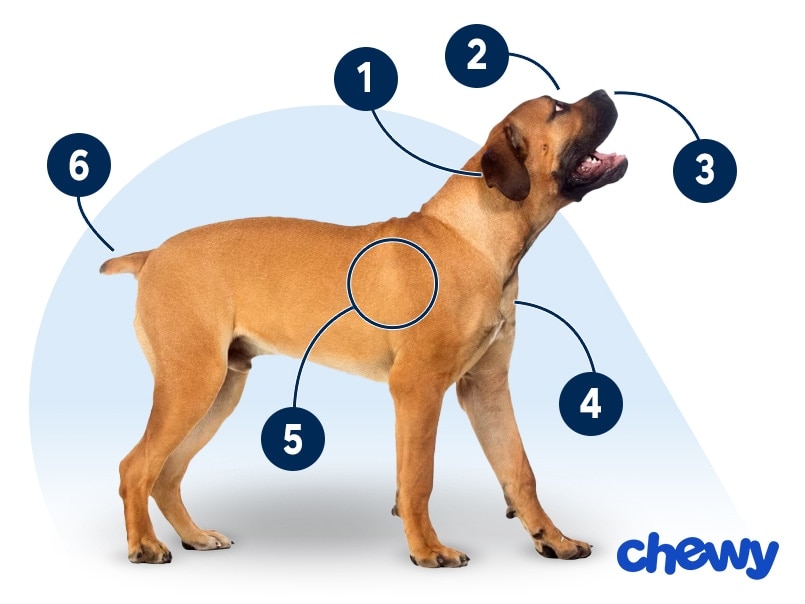
- Ears
The Boerboel's medium-sized ears are V-shaped and rounded at the tip. They usually fold over and lie flat.
- Eyes
Boerboel eyes are usually dark brown.
- Nose
Boerboels have a broad muzzle and a solid black nose.
- Coat Length
Their short coats are smooth, dense, and shiny.
- Coat Color
Boerboel colors include red, brown, reddish-brown, fawn, and cream, often with black coloring in the shape of a mask on their face. They can also be brindle (subtle tiger stripes) or Irish marked (white on the legs, face, and collar).
- Tail
While it was once common to dock a Boerboel’s tail, nowadays many of these pups have their tails intact. Many groups, including the American Veterinary Medical Association, oppose tail docking, and many countries as well as U.S. states have banned the practice.
Boerboel Temperament
The Boerboel was originally bred to work as a guardian dog, and some of these historical instincts are still alive in today’s pups. Typically, this manifests in an extremely loyal dog who loves their family deeply but is more reserved around people they don’t know well.
But Boerboels aren’t all work and no play. On the contrary, these dogs have a silly side and can even make good playmates for kids who know how to appropriately interact with animals. Just make sure playtime is supervised—it’s easy for this 150-plus-pound dog to accidentally knock over smaller children.
These pups enjoy family life, but they’re not always the biggest fans of guests. However, once proper introductions are made, they’ll ditch the side eye and learn to welcome others into their home.
Remember that breed only accounts for about 9% of a dog’s personality, and Boerboels are no exception. Consistent socialization and training is key to bringing out the best in your dog.
How to Care for a Boerboel
The Boerboel is a short-haired pup, but they’re not necessarily low–maintenance. While brushing might be a breeze, they’ll need plenty of time for training, exercise … and managing their drool.
Grooming
Training
Diet
Exercise
Environment
Boerboel Health
The average Boerboel lifespan is 9–11 years. Here are a few health issues to be aware of.
- Bloat and gastric dilatation-volvulus (GDV): Boerboels are prone to a condition called bloat, in which the stomach distends with air and/or food. A serious complication of bloat is gastric dilatation-volvulus: The stomach twists on itself, cutting off blood supply to certain organs. Symptoms include abdominal distension, restlessness, and dry heaving. This is a life-threatening emergency; if you notice these signs, go to the vet immediately.
- Dilated cardiomyopathy: Dilated cardiomyopathy is a genetic condition where the heart enlarges and doesn’t pump blood normally. Without treatment, it leads to heart failure. Diagnosis is based on an echocardiogram and treatment is often daily medication.
- Ectropion and entropion: Entropion is an eyelid abnormality in which a dog’s eyelid rolls in on itself. Its opposite, ectropion, causes the lower lid to fold outward. Both can cause pain, eye infections, and eye ulcers. Surgery is an option for severe cases.
- Elbow and hip dysplasia: Elbow and hip dysplasia are genetic conditions that develop during puppyhood when the joints don’t align well and become looser than normal. Treatment might involve weight loss, reduced activity, supplements, physical therapy, pain meds, or surgery.
Boerboel History
As Dutch, German, and Huguenot settlers (aka Boers, or farmers) arrived in South Africa in the 1600s, they brought large canines who were used as guardian dogs and hunting dogs.
Breeding between these pups and other dogs—possibly the Bullmastiff, Rhodesian Ridgeback, English Bulldog, and a native South African dog—resulted in the Boerboel we know today, according to the breed club.
The American Kennel Club recognized the South African Boerboel in 2014. Boerboel puppies tend to cost between $1,500–$2,000. If you choose this route, pick a responsible breeder.
You can also consider adopting a Boerboel. Check out a local giant breed dog rescue, like Save the Giants; keep an eye out at your local rescue or animal shelter; or search Chewy’s database of adoptable dogs in your area.
